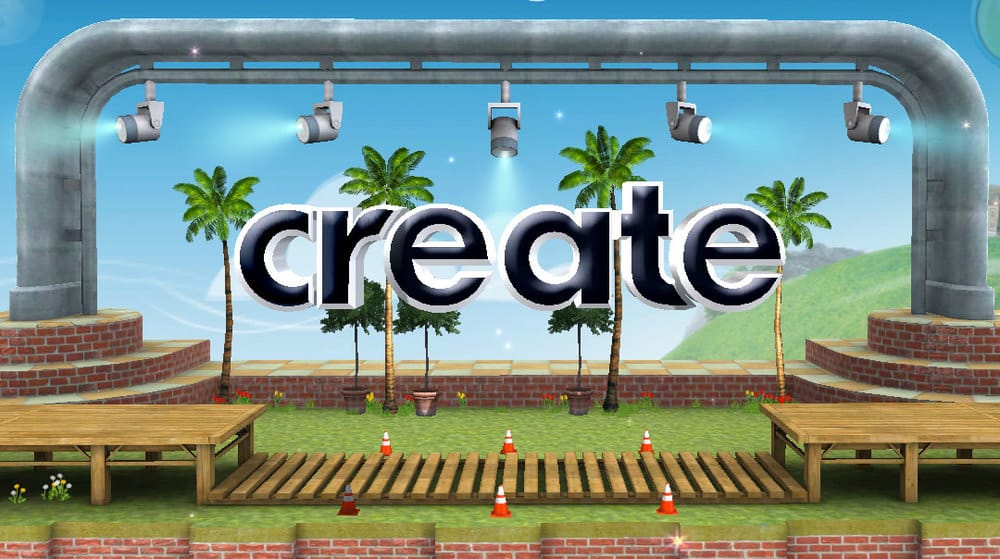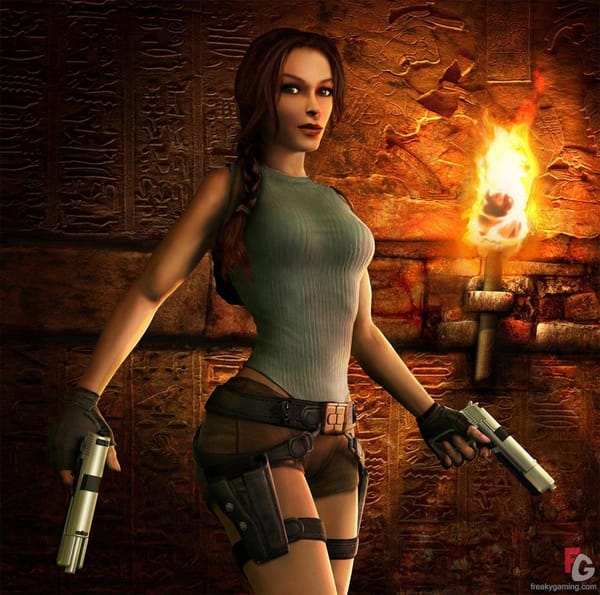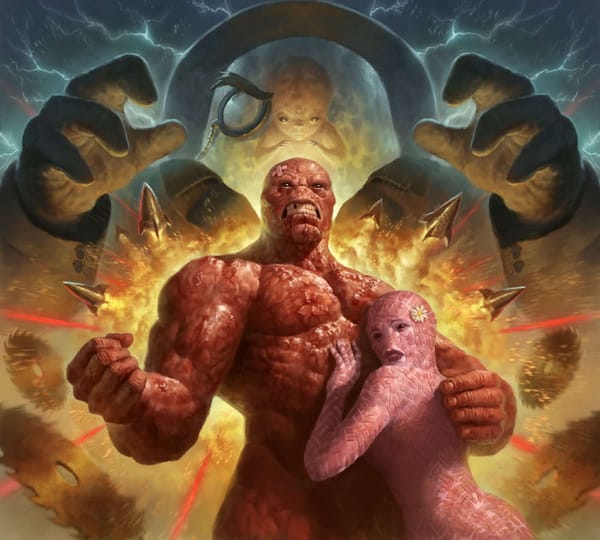EA's Creatively challenged
Simon Worthington places, pastes and paints to his heart’s content in EA’s Create

When _Create _was first announced, it was a dream come true. Electronic Arts, creators of The Sims series, were making a new kind of creation-simulation game. No mention of houses or families – yes, they were finally making The Sims without the Sims! At last, players could build a house (or anything!) and not have to deal with the monotonously boring lives of the simulated little people afterwards; just pure, unbridled creativity.
And yet, despite promising all this, even the most determined of gamers could be forgiven for failing to like the finished product. _Create _is a far cry from The Sims 4, instead it’s a mix of creative tools and gameplay elements that don’t really work well together. So why does a game that seemed to have so much promise, turn out so unashamedly mediocre?
_Create _should certainly be lauded for its simplicity – the purpose of the game is exactly what would be imagined. Create presents the player with an empty ‘scene’ – a set of platforms, walls and rocky outcrops – and then hands over the tools to decorate it and fill it with stuff, ranging from grass and flowers to rollercoasters and jumbo jets. Objects can be rotated and scaled up, graffiti can be placed on walls and scenes can be moved from Himalayan Mountains to bustling cityscapes with a short click of the mouse. Initially the choice is limited but new items are unlocked by completing special puzzle challenges or ‘Create Chains’, special sequences where players decorate certain places using certain tools.
However, oddly for a game based on creativity, _Create _also stifles the users creative impulses. Although there’s free reign over where objects are placed, the architectural elements and theme of a scene are not modifiable; players are limited to creating scenes based around certain topics, such as ‘theme park’, ‘transport’ or ‘Halloween’. This seems counter to the premise of Create. Surely the utmost should be done to not the limit the player’s options? Players want to choose where the natural rocks, walls and tunnels go, not have some schmuck pick them out and leave the player to fill in the rest. The whole ‘scene’ concept is silly too: rather than being an empty landscape to fill up as desired it’s more like a tableau of objects and textures pasted onto random pedestals and ramps. It’s impossible to make anything remotely credible and this totally ruins the whole ‘make-what-you-like’ concept.
Having to unlock things is a nice idea and it certainly gives the game more of a purpose, but it’s a massive disappointment for people who actually do want to decorate the scenes. For some weirdo who says, ”Ah man, I’ve got this sweet idea for a graveyard scene,” actually reaching the appropriate Halloween level and unlocking all the right objects takes a trudge through 10-20 hours of creating other stuff first. This is really annoying for anyone who genuinely wants to use the tools on a scene of their choice; creativity is no fun when it’s forced.
Create Chains reward players for doing certain things in certain places in a scene, like putting textures in a specific area or filling a specific place with objects. While this certainly helps to guide players along the process of customising a scene from start to finish, the requests tend to end up saying ‘I suggest you place this object here’, further limiting the imagination. For example, when the chain says “place down some objects” and it picks an area that’s just been decorated as runway, no-one’s going to slap a 1920s steam engine down on the gleaming tarmac. Once you’ve done what the game asks you’re whisked away to somewhere different, which is in itself annoying as it doesn’t give time to properly rotate or scale the last object before being dragged away from it.
Although players might not be able to be that creative, the game artists certainly were. Graphics are a strong point in _Create _and the game looks great from start to finish, even on a low-end system. The huge backgrounds are high-resolution and detailed, and breathe colour and life into the scene, and the visual effects, like the confetti that can be made to fall from the sky, manage to remain visually interesting whilst not getting in the way. The user interface has some usability flaws, but again it still looks nice while it blocks the view.
Despite being nothing new in the world of gaming, the puzzles are actually Create’s redeeming feature. Each level comes with eight or so challenges that require players to use a selection of interactive objects to fulfil a goal, often moving an object from one place on the stage to the other. The puzzles vary in complexity from the (deceptively) simple ‘knock over a firework with a basketball’ to the slightly more complex ‘build a robot T-Rex out of candy sticks and chewing gum’. Having an epiphany and watching it turn into a correct solution is fun and satisfying. The challenges start out easy but get more interesting later on, and for the serious puzzle fiend more user-created levels can be downloaded from the online gallery. The “Contraption-o-matic” puzzles – where basic building blocks like rods and wheels are used to build some kind of vehicle – also deserve a special mention for keeping the experience fresh.
But the challenges also fall foul to one fatal flaw that blights so many puzzle games: they are just too finicky. With puzzles, the fun is in the _solving _– working out what needs to happen and then watching it work. The most frustrating thing to encounter in a puzzle game is a situation where you know what you need to do but simply can’t get the game to let you do it. Having to position a basketball at a very specific point above a very specifically placed ramp so that it bounces and hits a very specific place on a rocket makes the simple ‘firework-basketball’ puzzle mentioned above a nightmare to actually complete. Any enjoyment taken from the challenge drains fast when met with frustrating, chaotic physics that stop a solution working due to sheer arbitrariness, and unfortunately it happens just that little bit too often in Create.
Unfortunately, I could go on. The challenges and the scene are completely disconnected, with challenges taking place on a small stage at the front of each level, so much so the two could almost be separate games without the other noticing. The puzzles are also wholly in 2D (or 2.5D, if you want include 3D graphics) and, when you boil it down, actually provide a similar experience to many online Flash games (although _Create _looks much better, of course).
What this all adds up to is a game that doesn’t really know what to do with itself. Creativity should be the order of the day (it’s in the freaking title), but through Create’s critical design mistakes the imagination is dragged down to the level of a glorified colouring book. Challenges can be fun but too often are difficult in entirely the wrong way. Unlocks are the final nail in the coffin, and spoil the game for anyone who does want to decorate the scenes. It’s a shame, because the concept behind Create is still sound, The Sims without the Sims is still a good idea. This time, thought, EA have gone in the wrong direction, limiting the creativity instead of unleashing it.
Create is available now from EA and Bright Light Studios for PC, Mac, PS3, Xbox 360, and Wii.









